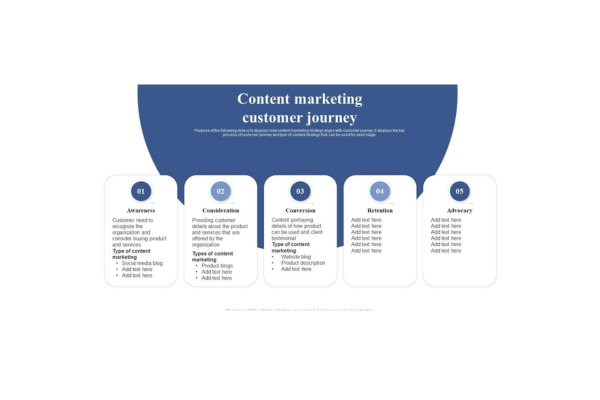Content marketing helps businesses connect with people. It shares useful information. This builds trust. Trust leads to sales.
People go through steps before buying. This is the customer journey. Content supports each step.
Understanding the Customer Journey
The customer journey has stages:
-
Awareness: People learn about a problem.
-
Consideration: They look for solutions.
-
Decision: They choose a product.
-
Retention: They keep using the product.
-
Advocacy: They recommend it to others.
Each stage needs different content.ActiveCampaign+7Coronaforo+7WIRED+7
Content for Each Stage
1. Awareness Stage
Goal: Let people know you exist.
Content Types:
-
Blog Posts: Write about common problems.
-
Infographics: Show data in pictures.
-
Social Media Posts: Share tips and facts.
Statistic: 73% of marketers say content addressing current challenges is important. CMI
2. Consideration Stage
Goal: Show how you can help.
Content Types:
-
Case Studies: Share success stories.
-
Webinars: Teach something useful.
-
Comparison Guides: Compare options clearly.
Quote: “We need to stop interrupting what people are interested in and be what people are interested in.” – Craig Davis Pepper Content
3. Decision Stage
Goal: Help them choose you.
Content Types:
-
Testimonials: Share customer feedback.
-
Product Demos: Show how it works.
-
FAQs: Answer common questions.
Statistic: 84% of marketers say relevant and actionable content is crucial. CMI
4. Retention Stage
Goal: Keep customers happy.
Content Types:
-
Newsletters: Share updates and tips.
-
How-To Guides: Help them use your product.
-
Exclusive Offers: Give special deals.
5. Advocacy Stage
Goal: Encourage sharing.
-
Referral Programs: Reward recommendations.
-
User-Generated Content: Feature customer stories.
-
Community Forums: Create spaces to connect.
Aligning Content with the Journey
Matching content to each stage helps customers. It builds trust and increases sales.
FAQs
Q1: Why is content marketing important?
It builds trust and guides customers.
Q2: How do I know the customer’s stage?
Look at their actions and questions.
Q3: What content works best?
It depends on the stage. Use the guide above.
Q4: How often should I update content?
Regularly check and refresh it.
Q5: How do I measure success?
Track engagement and sales.
Watch and Learn
For a visual explanation, watch this video:

